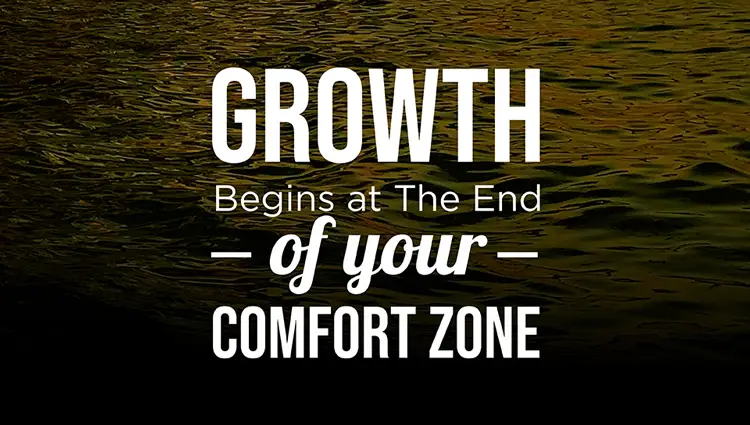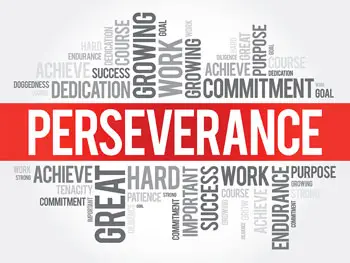
Major gifts fundraising can feel like a delicate dance between building genuine relationships and meeting lofty revenue goals. It demands patience, dedication, and—perhaps most importantly—persistence. Without persistence, a promising donor might slip through the cracks, or a prospect on the verge of making a transformative gift might never receive that nudge to come on board.
There are countless stories in the philanthropic world of how a single extra follow-up led to a donor meeting and eventually a significant contribution. Let’s look at why persistence is essential for major gifts fundraisers, what it looks like in practice for current donors and new prospects, and why having a thick skin is an integral part of your major gifts skill set.
Many major gifts come from individuals who give at a high level not only because they have the means but also because they have developed a strong loyalty to the organization. Loyalty stems from consistent contact, authentic conversations, and seeing tangible results of their generosity. While luck or timing might occasionally play a role in fundraising success, methodical persistence ensures the best outcomes over time.
A single meeting or two is rarely enough to cement a meaningful bond, especially when donors are continually approached by multiple organizations. A fundraiser gently reminds donors that their partnership is vital and valued by staying in consistent touch—through emails, phone calls, or personal visits.
In many cases, donors who make a major gift will have given smaller amounts beforehand. That incremental journey from initial interest to substantial investment is often a result of sustained engagement. When a fundraiser remains present in a donor’s life, offering updates, discussing new initiatives, and sharing personal stories from beneficiaries, the donor becomes part of a narrative bigger than themselves.
Donors can easily lose sight of why their support matters if they’re not reminded. Persistence, therefore, is the glue that keeps the donor connected to the organization’s mission, bridging any potential gaps of doubt or distraction that might arise.
With current donors, persistence comes from frequent, personalized communication. This should include monthly touches, ranging from personal emails to brief phone calls or text messages. The purpose isn’t to bombard donors with constant asks or generic news. Instead, it is about building an ongoing relationship where the donor feels seen, appreciated, and informed. This monthly rhythm might involve sending a handwritten note expressing gratitude for their recent gift, calling them to discuss a new program the organization is piloting, or inviting them to a private gathering where they can connect with leadership and other supporters.

When a fundraiser invests time in these individual donor plans, each donor interaction becomes intentional. Over the course of a year, a donor might hear from the organization every month in a way that feels personal, not perfunctory. The more sincere these communications are, the more likely the donor is to perceive the relationship as meaningful. That sense of importance can inspire donors to increase their giving level, extend their existing commitments, or offer introductions to peers with similar philanthropic interests. What matters most in this process is showing genuine interest in the donor’s thoughts, experiences, and feedback rather than merely fulfilling a communication quota.
Personalizing each outreach touch may feel like extra work, but in the world of major gifts fundraising, sincerity and consistency often lead to a deeper bond. By letting donors know how their previous gifts are being used or how new initiatives align with their values, a fundraiser can help them see the real-world impact they’re making. These donors become more than just financial supporters; they become partners in advancing the mission, and that shift in perspective is often rooted in consistent, thoughtful engagement.
Whereas current donors might appreciate monthly updates or invitations to events, prospective donors require a different kind of persistence. The primary challenge at the earliest stages is simply scheduling a meeting. Many prospects may be unfamiliar with your organization or have not yet formed a deep connection to your cause. They might be busy executives, entrepreneurs, or community leaders who receive numerous invitations and charitable requests. In these scenarios, securing that crucial initial conversation can take five, seven, or even ten outreach attempts.
The key is to remain polite, patient, and consistent. Short, respectful emails or phone messages demonstrating genuine curiosity about the prospect’s interests can gradually break the ice. If one form of outreach isn’t yielding results, it may be time to try another. Some prospects respond more readily to a well-crafted text message than a lengthy email. Others might be more likely to acknowledge a handwritten card or a referral from someone in their network. By demonstrating a willingness to adapt and remain gently persistent, fundraisers can stand out from the many other organizations vying for a prospect’s attention.
Once a meeting is scheduled, the real work of relationship-building begins. If a prospect ultimately agrees to support the organization, the foundation of that commitment can often be traced back to the fundraiser’s refusal to give up. That determination sends a message: your organization values their time and perspective so much that you’re willing to pursue them with warmth and respect. The difference between a prospect who remains uninterested and one who becomes a devoted donor might boil down to those extra couple of follow-up calls.
The necessity of persistence in major gifts fundraising also means that fundraisers must learn to handle rejection and indifference gracefully. No matter how often you reach out, not every donor or prospect will respond. Some may decline future meetings or gifts, while others might even react negatively to repeated contact. This is why having a thick skin is so crucial. A fundraiser should never take a lack of response personally. Instead, it helps to see it as part of the broader process of sorting through the pool of potential donors to find those genuinely aligned with the organization’s mission.

Rejections can serve as learning opportunities. By reflecting on how a prospect responded— or didn’t respond—fundraisers can refine their approach for future attempts, whether with the same individual or a different one entirely. Persistence, after all, does not mean pestering. It entails consistent, courteous outreach that respects boundaries while conveying genuine interest. Developing resilience in this line of work allows a fundraiser to keep going, even when they face multiple setbacks. That perseverance, matched with compassion and authenticity, sets successful major gifts officers apart from those who might quit at the first sign of reluctance.
Major gifts fundraising thrives on steadfast persistence. Whether working with current donors who appreciate frequent, personalized updates and invitations, or cultivating new prospects who may require multiple attempts before scheduling an initial meeting, the commitment to keep going truly pays off. This approach demands a thick skin, as not every outreach effort will bear fruit. Yet every extra call, email, or meeting can be the one that cements a lasting relationship—or secures a gift that transforms an organization’s work. By embracing the power of persistence and maintaining a respectful, genuine tone in every interaction, fundraisers position themselves for long-term success and ensure the causes they champion continue to flourish.
Hands-on, in-the-trenches experience designed to equip you with strategies and skills for success. Choose the one that fits your goals—or take both for maximum results. It’s intense, effective, and built for leaders like you.
Related
800.490-7090
484.680.7800 local
Succeed@MajorGifts.com
Stay Informed!
Webinars, free downloads, tax law changes, more. Subscribe today. You can unsubscribe at anytime.
Copyright 2024 © PlannedGiving.Com
Stay informed with timely news. You can unsubscribe at any time.
Success List